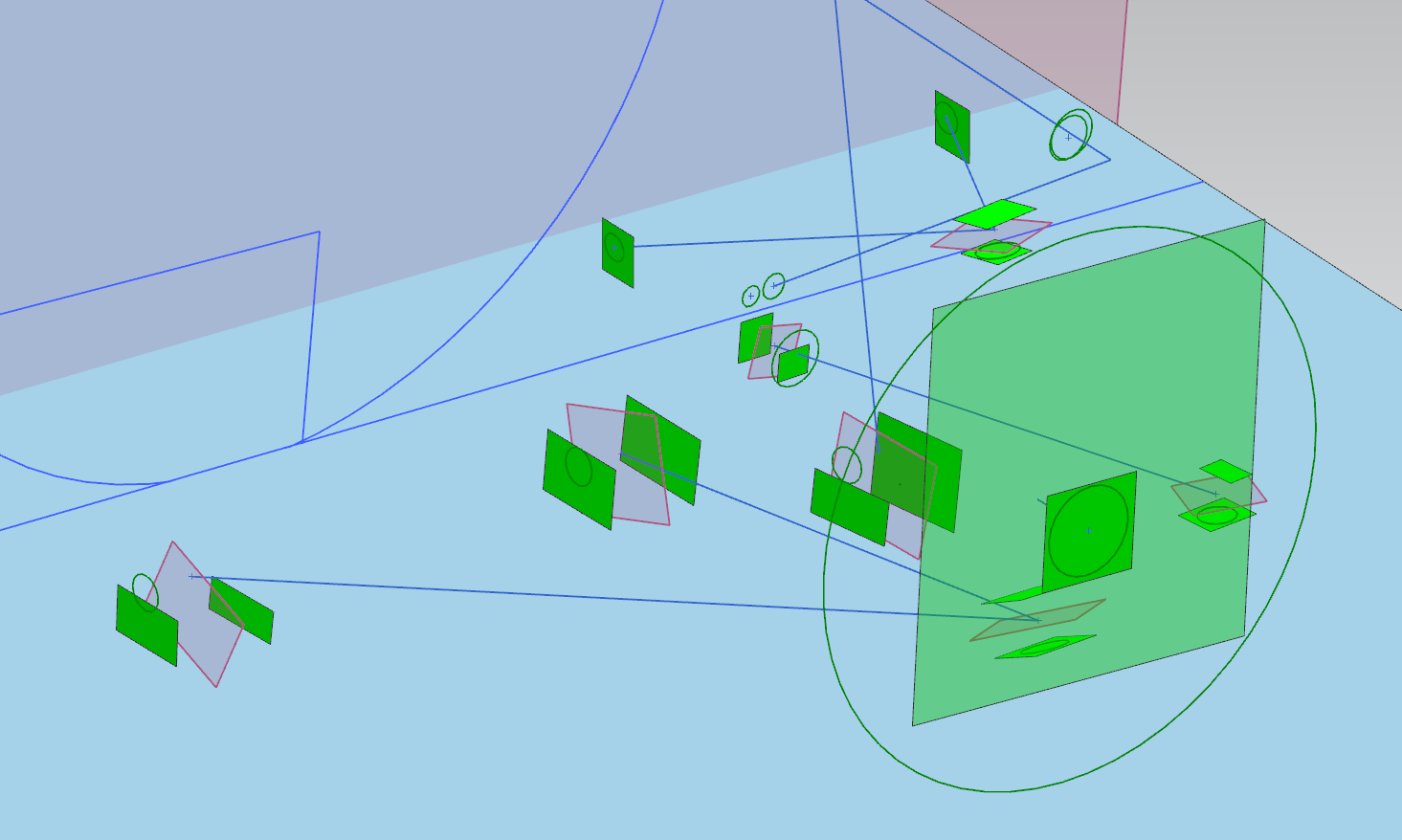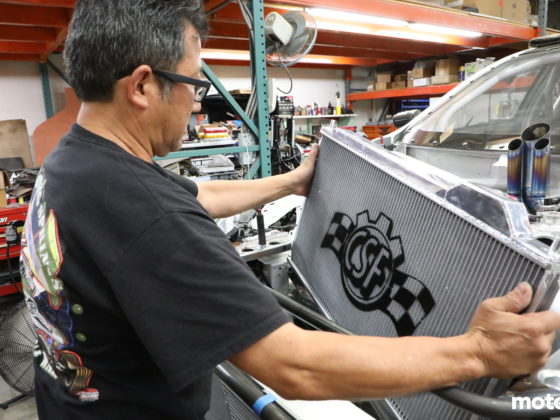COVID-19 has impacted everyone, and the motorsports community has been no exception. For a while there, everything was shut down. It didn’t matter if you drove in circles, or made left and right turns, drove on dirt, asphalt, snow, or ice. You were shut down.
In the midst of it all, a shining light was visible at the end of the tunnel — sim racing. In fact, at the height of the panic, with nearly everyone in total isolation, Fox Sports 1 started airing NASCAR and other circle track racing on iRacing. This wasn’t a gimmick or a joke. People took it seriously. In fact, it was taken so seriously that lousy conduct and bad behavior on the virtual track had real-world consequences for some drivers — they lost team sponsorships over F-bombs and rage quits. Just because there were no physical consequences to actions didn’t mean the actions taken in the virtual world didn’t have real-world consequences.
eSports in motor racing was having its moment. Things were jumping the shark or at least turning a distinctive corner. There’s already been a precedent for virtual racers making the jump to real racing, but perhaps now that precedent would become even more firmly entrenched. When a real-world backmarker wins the virtual version of the same race, does it cause teams and sponsors to ask hard questions? It’s left to be seen.
A recent Racecar Engineering issue painted sim racing with a very cynical hue. Sure, if you are Dario Franchitti and drive your Indycar back-to-back at Indianapolis in the real world and in iRacing, there are going to be some real differences. The car might handle quite differently in the virtual world, but does that totally invalidate the sim as a training tool? Most definitely not.

With that background, let’s return to Project SC300. You’ve already seen some of the articles about our Project Sim Racer, so you know that I have a sim racing set up at home. But I drive a 1992 Lexus SC300. I don’t drive a GT4-level car, and I certainly don’t have an open-wheeler. The Lexus is more powerful and heavier than a Global MX5 cup car. But it doesn’t have the CG or handling characteristics of a Corvette. This is a “home-built” contraption with nuances and quirks. You’re lucky to find an MKIV Supra in most sim racing titles, let alone an SC300. Does that mean that I’m stuck driving a Ford Mustang FR500S in iRacing because it’s the most reasonably similar vehicle (and I’m using that term loosely)? Is that valuable training? Could I do better?
It turns out that I can, thanks to highly-moddable sims like rFactor 2 and some special measuring tools from ECM – Global Measurement Solutions.

According to the encyclopedia of human knowledge, Wikipedia, metrology is the scientific study of measurement. ECM is a Massachusetts-based firm that specializes in measurement. You might be wondering, “what does sim racing have to do with measurement?” Just wait for it.
If you have a measurement task, ECM can help. They are a laboratory-grade organization that can handle anything from the calibration of equipment to automating measurement in manufacturing to training and more. Since 2001, they have been in the business of measurement equipment and helping people and organizations use it. They provide 24/7 global services with a large staff of certified metrology engineers. One of their specialties is 3D scanning and modeling.
The interesting thing about most of the sim racing programs/titles/games (whatever you want to call them) is that the model you see of the car is 100% meaningless. That object that drives around the circuit and looks cool in the replays is just a 3D object that’s being rendered in space and lit and shaded. It has zero performance impact whatsoever, not even aerodynamic. You could create a mod that was a 3D model of a sneaker with no wheels, and it could perform like an F1 car. That’s because, in many cases, the actual performance of the vehicles is usually driven by calibration files that are just plain-text INI-type files. rFactor 2 is definitely this way.





11 comments
There’s places that will do tire testing and it’s… expensive but if you keep the test matrix down, in the 4-figures level. Would be interesting to add that to the mix. I’m figuring that most of the time in sims it’s not that the tire model itself has issues, just that it’s filled with variables that people are guessing at.
The most important thing is that the driver understands how the tire develops grip, and how to keep it at the proper temp. You can collect as much data as you want, but if the driver doesn’t understand that data, it is worthless. The pneumatic tire has been around for over a hundred years and there’s only one book written about it? Sad.
This is a must read for anybody serious about racing:
https://www.sae.org/publications/books/content/r-351/
Very interesting, great work Erik! I had no idea this type of equipment could be rented and used by near mortals.
The wheels are turning on other ways this type of equipment could be used.
@Dan: Where / who does the tire testing? I do have a spare that I could trash…
@Erik L: Oh yeah? What are you thinking of measuring/scanning?
Calspan does – if you are willing to be flexible on schedule and don’t get too complicated it helps hold the cost down, and the gent I was talking to was willing to deal with it as a smaller project.
Dan – if you find me on Facebook or email me at erikmjacobs (gmail) would you tell me who you spoke with? I’d be curious to talk to that person.
Mailed. Though as I mention in the email I just used the contact form at https://www.calspan.com/contact/ and they got back to me in a couple days.
Great article of the process. Well done.
Thanks Brad!
Yeah, I really like this article. I wrote my own code in MATLAB in college using Dixon’s equations and precise measurements (by hand) of the EG6 Civic suspension. I had so many parts lying around, it was pretty much a no brainer. You can learn how to avoid so many mistakes through simulation. While I did some minor modifications using a LCON traction bar which allowed me to remove the rear half of the LCA, and drop 8lbs of unsprung weight, I also gained enormous appreciation for Honda suspension engineers. The stock bump steer curve could not actually be improved upon without new spindles. Simulation proved to me that some things are better left alone.
This is a great book, BTW. It is the ‘Bible’ for suspension engineers.
https://www.wiley.com/en-us/Suspension+Geometry+and+Computation-p-9780470510216
Thanks, Joe! That looks like a real textbook there. Probably well over my head. As you’ve learned some things are best left alone, I have learned that for some things I should probably outsource. Suspension engineering is one of those things. I’m fortunate to have folks like Figs Engineering, Mike Kojima, and Rob Lindsey (Morlind Engineering) available to me!